The Future of Acupuncture: Tradition Meets Technology
May 31st 2025
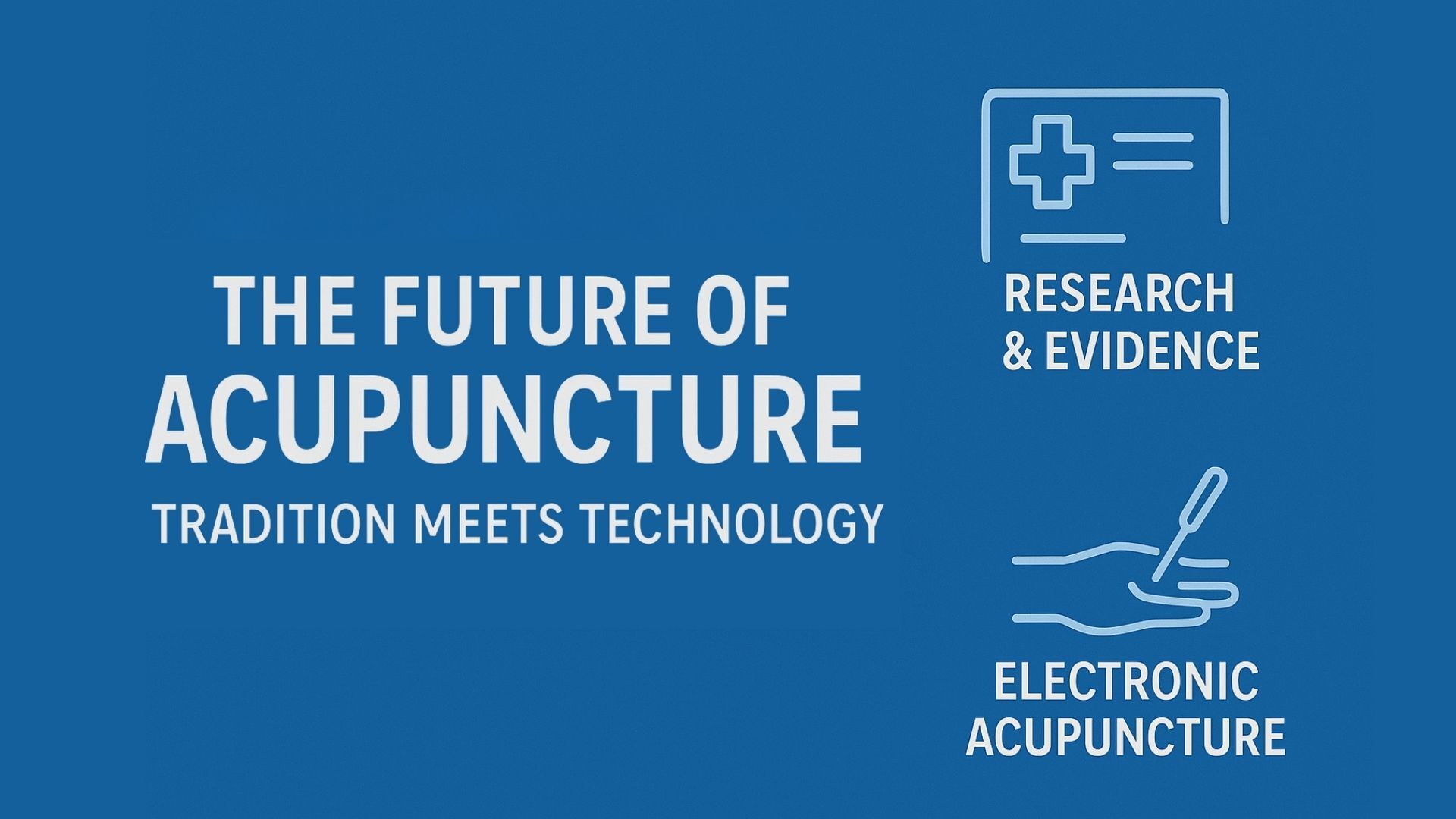
Traditional acupuncture uses thin needles to stimulate specific points along the body’s meridians, aiming to balance Qi or energy flow. Electroacupuncture builds on this by passing a small, controlled electrical current between pairs of needles. This approach provides more consistent and deeper stimulation than manual needling alone, often resulting in stronger therapeutic effects.
In this blog, you’ll learn how electroacupuncture works, why it’s more than just an upgrade to traditional methods, and how technologies like AI and wearable sensors are reshaping its future. We’ll explore how these innovations are improving patient outcomes, increasing practitioner efficiency, and making acupuncture more personalized and data-driven.
Why Modernization in Acupuncture Was Inevitable?
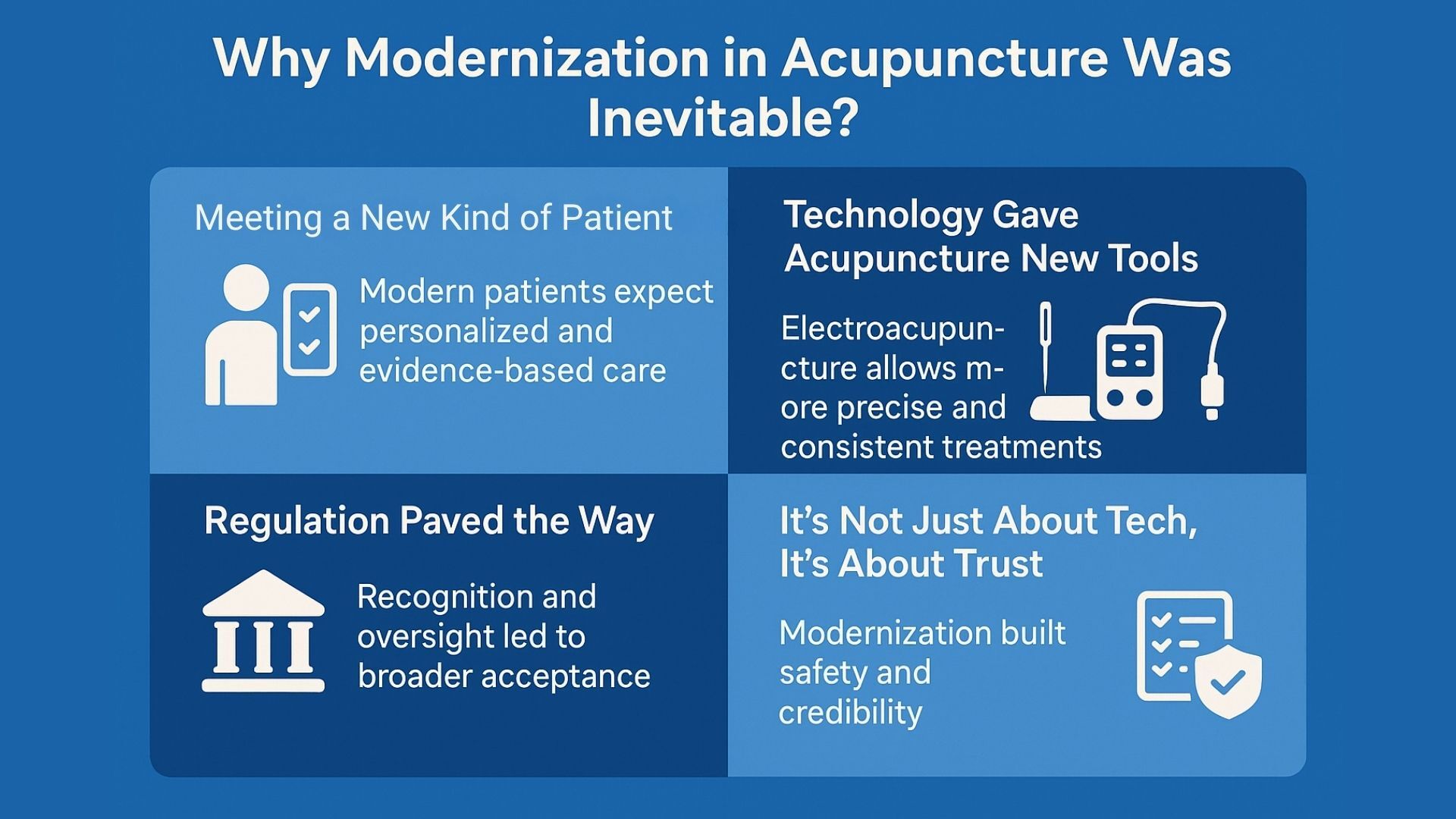
Acupuncture has come a long way from its ancient roots. Originally practiced over 3,000 years ago in China, it was based on the concept of Qi - the body’s vital energy flowing through invisible meridian channels. While this traditional framework laid the groundwork for what we now call Traditional Chinese Medicine (TCM), the world around it evolved rapidly.
Meeting a New Kind of Patient
Today’s healthcare consumer is no longer satisfied with vague outcomes or unmeasurable relief. They want to know why something works. They want results that are faster, more consistent, and backed by data. And rightly so.
That shift in mindset is what pushed acupuncture to evolve. As it expanded globally, from East Asia to Europe, to the U.S., it met healthcare systems grounded in evidence-based medicine, requiring clinical validation. This wasn’t a rejection of acupuncture’s value, but a call for measurable effectiveness.
Modern patients expect more than symptom relief, they want personalized treatments, clear protocols, and real answers. That’s where technology stepped in.
Technology Gave Acupuncture New Tools
To meet the demand for more precise validation and personalized care led to the development of electroacupuncture, a method that enhances traditional needling with controlled electrical impulses. By stimulating acupuncture points with consistent, low-frequency currents, it adds precision and reproducibility to treatment, which is critical for both practitioners and patients.
Today’s clinics don’t just rely on needles. Many now use biofeedback devices, wearable sensors, and microcurrent stimulators to optimize results. These tools track how the body responds in real-time and help tailor treatments based on individual physiology, a far cry from the one-size-fits-all approach of the past.
You can explore our range of Electroacupuncture Devices to see how modern clinics are implementing these advancements.
Regulation Paved the Way
Another turning point came when acupuncture gained institutional recognition. For instance, in the U.S., the FDA classified acupuncture needles as medical devices in 1995. This wasn’t just a technical label, it was a sign of acupuncture’s shift from the margins of medicine to the mainstream. Inclusion in insurance coverage and hospital-based care followed, opening the doors for further innovation.
It’s Not Just About Tech, It’s About Trust
Modernization wasn’t only about gadgets. It was about improving safety, building credibility, and offering consistent results. For practitioners working with patients hesitant about needles or skeptical about outcomes, mastering tools like electrostimulators and non-invasive accessories through microcurrent therapy training can help them build patient comfort and confidence.
By integrating both tradition and innovation, acupuncture is now more accessible, acceptable, and adaptable than ever. And this evolution isn’t stopping, it’s paving the way for personalized, integrative care that fits the rhythm of modern medicine.
The Rise of Electroacupuncture – Science Meets Meridian Wisdom
Imagine if the body’s natural energy could be gently enhanced and guided using precise electrical pulses. That’s the promise of electroacupuncture, where the ancient wisdom of meridian theory meets the precision of modern science.
How Does Electroacupuncture Work?
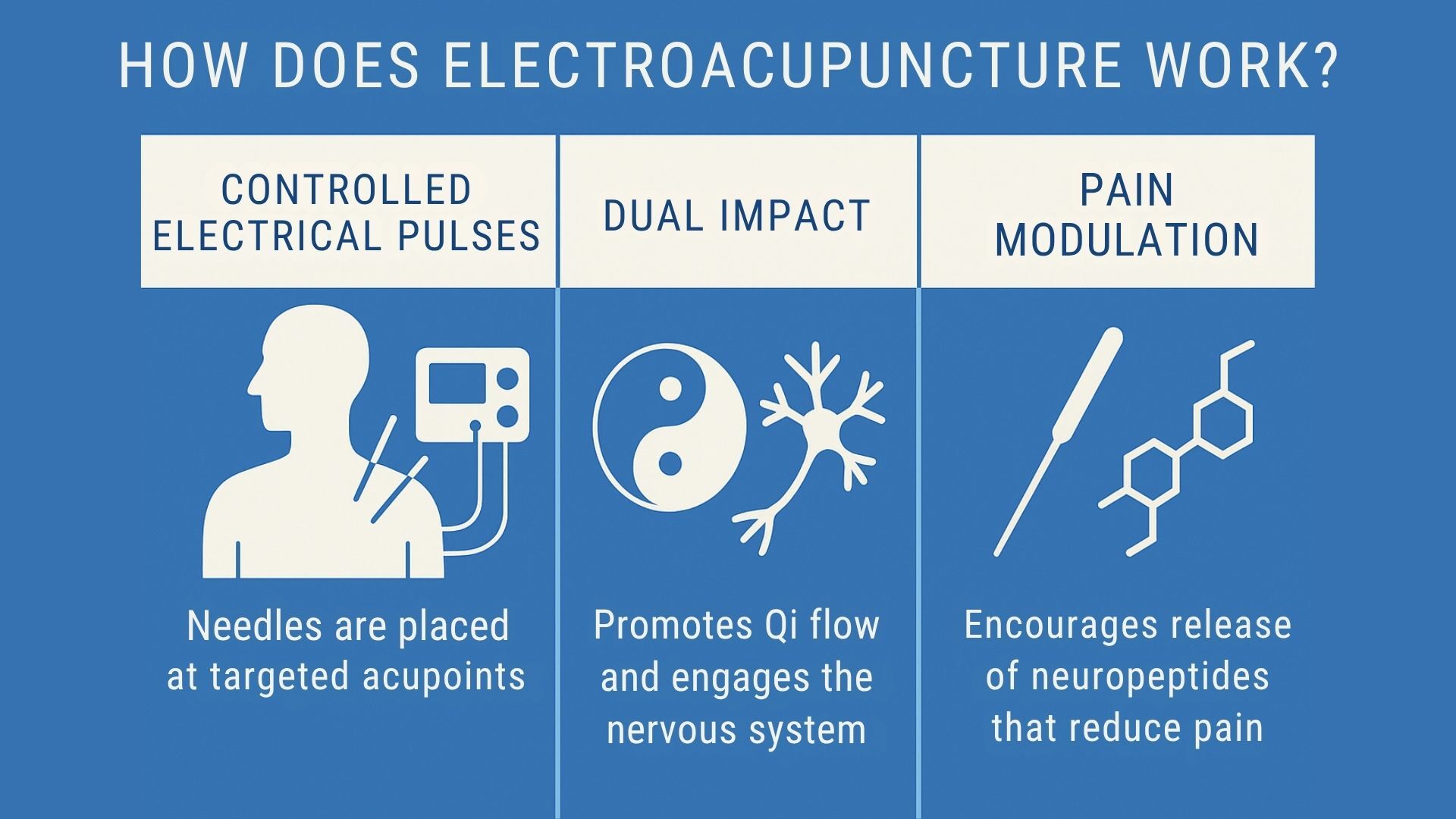
- Controlled Electrical Pulses: Practitioners place needles at targeted acupoints and connect them to devices that emit adjustable electrical pulses. The frequency and intensity can be customized depending on the patient’s condition and tolerance.
- Dual Impact: This technique respects Traditional Chinese Medicine principles by promoting the flow of Qi, while also engaging the nervous system and biochemical pathways recognized by modern science.
- Pain Modulation: Studies show that different frequencies encourage the release of neuropeptides like enkephalins and dynorphins, which naturally reduce pain and inflammation.
Clinical Benefits and Applications
Electroacupuncture is widely used to manage:
- Chronic pain and arthritis
- Chemotherapy-induced nausea
- Muscle spasms and blood circulation issues
- Stress, addiction, and neurological disorders like Parkinson’s disease
Its ability to activate a broader area around the needle and stimulate biochemical responses often results in faster and more comprehensive relief compared to traditional methods.
Innovative Devices That Make a Difference
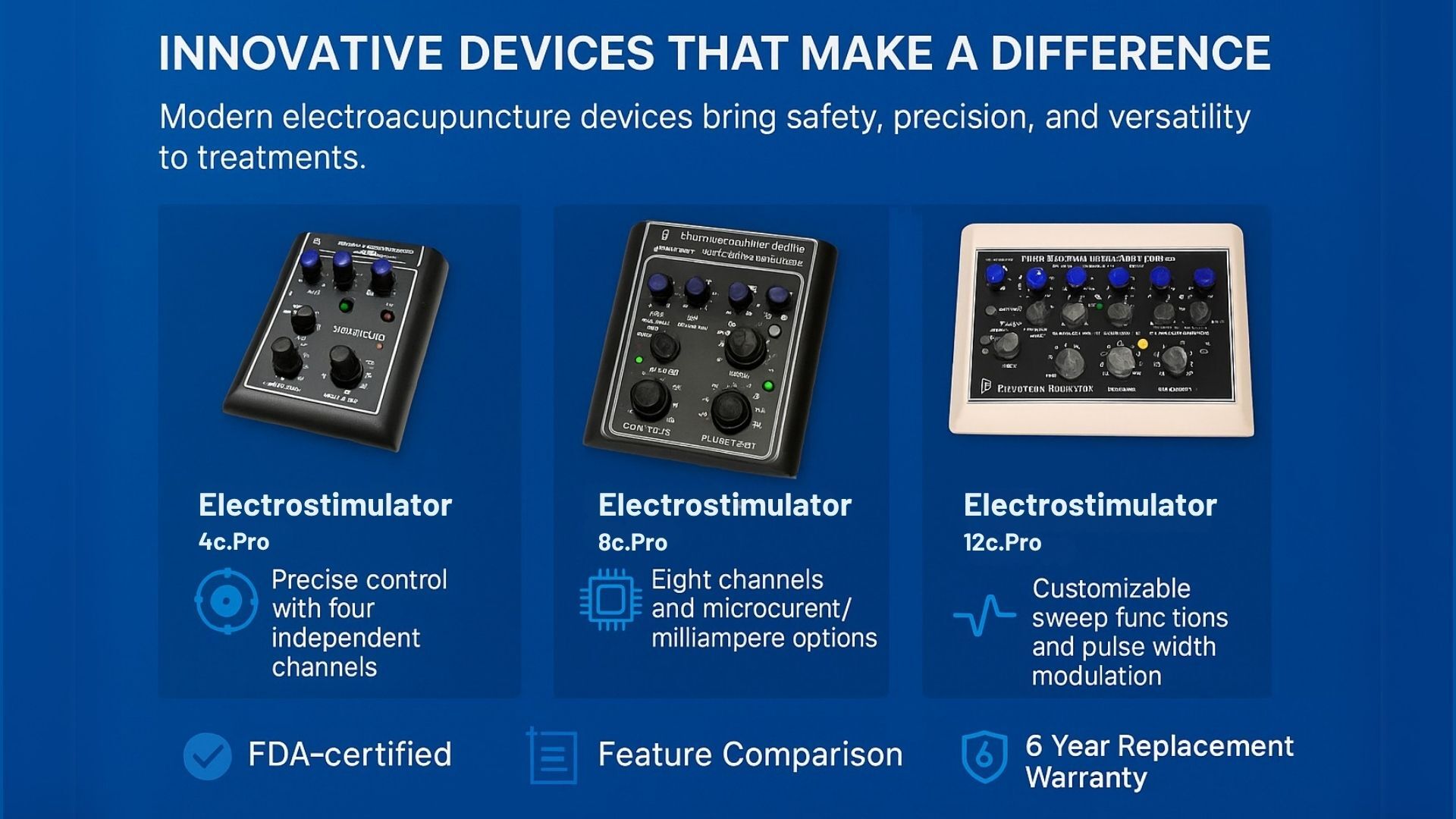
Modern electroacupuncture devices bring safety, precision, and versatility to treatments. For example:
- The Electrostimulator 4c.Pro offers precise control with four independent channels, ideal for focused therapy sessions.
- The 8c.Pro expands capabilities with eight channels and options for both microcurrent and milliampere stimulation, perfect for complex cases.
- The 12c.Pro Advanced includes customizable sweep functions and pulse width modulation, allowing clinicians to customize treatments with unparalleled accuracy.
These FDA-certified devices are calibrated to ensure consistent, safe, and effective delivery of electrical stimulation, reflecting the highest standards in integrative medicine. Practitioners can review detailed Feature Comparison charts to choose the best device for their needs. Plus, backed by Pantheon Research’s industry-leading 6 Year Replacement Warranty, practitioners can invest in their tools with confidence and peace of mind.
Merging with AI, Sensors & Data: The Next Leap
As technology advances, a fascinating question arises: Can acupuncture be personalized with artificial intelligence (AI)? The answer is a resounding yes. By integrating AI with sensors and data, acupuncture is entering a new era of precision and customization.
AI-Powered Personalization in Acupuncture
Modern AI algorithms analyze large amounts of patient data, symptoms, medical history, and treatment responses to identify patterns that help tailor acupoint selection and treatment strategies. This data-driven approach supports practitioners in delivering personalized care that improves outcomes and accelerates recovery.
Real-Time Feedback Through Sensors and Wearables
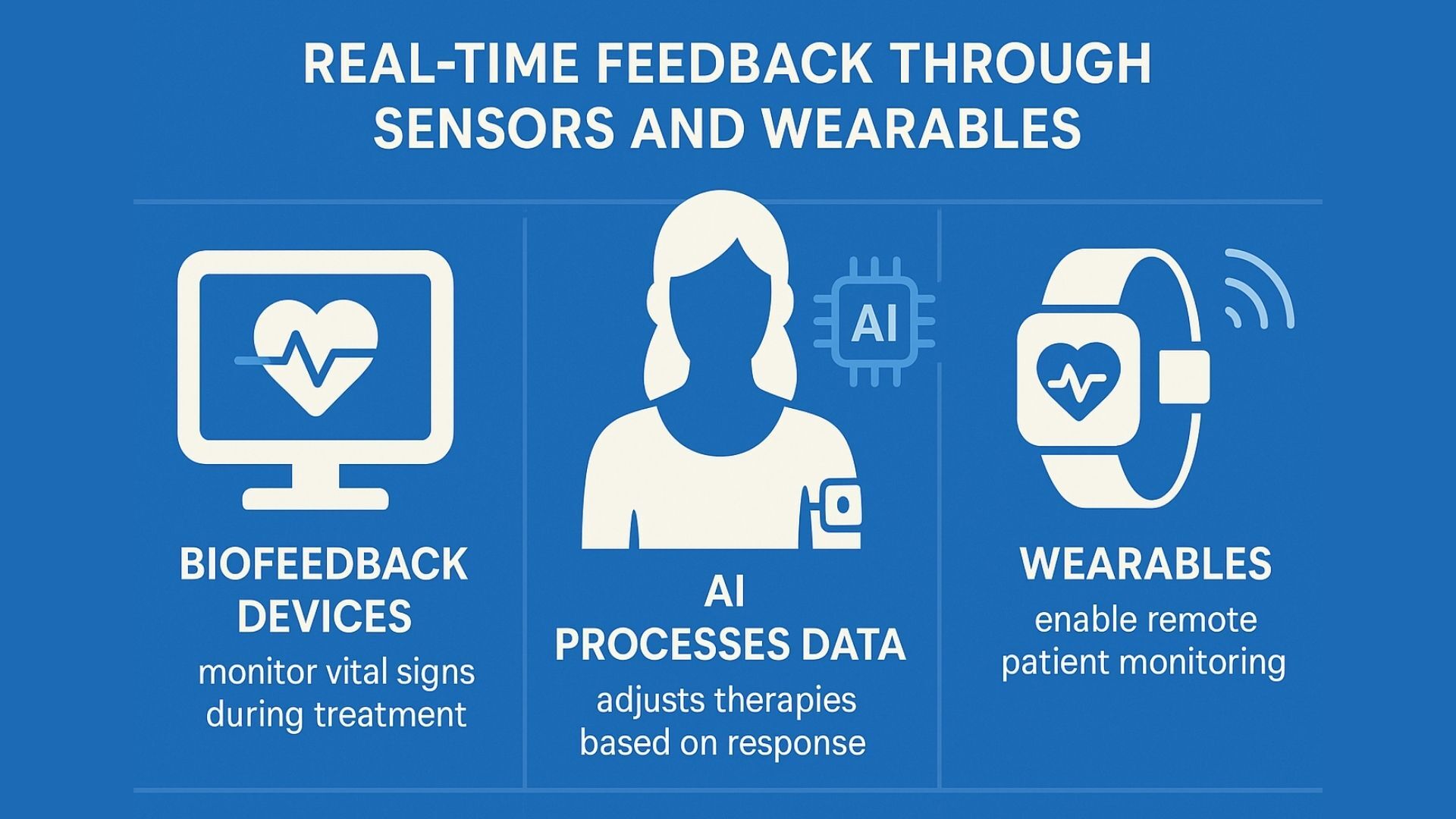
Wearable devices and wireless sensors now collect vital signs such as heart rate, skin conductivity, and muscle activity during treatment sessions. This real-time data, processed by AI systems, allows for dynamic adjustment of therapies based on how a patient responds, enhancing treatment effectiveness.
- Biofeedback devices provide immediate insights into physiological changes.
- Sensors can monitor subtle movements and stress levels during sessions.
- Wearables facilitate remote patient monitoring and continuous care outside the clinic.
Robotics and Data Science for Consistency and Precision
Advanced robotics equipped with ultrasound and mechanical sensors is being developed to assist practitioners in locating acupoints with greater accuracy and controlling needle insertion depth and angle. This standardization reduces variability and enhances safety.
Meanwhile, machine learning models analyze practitioner techniques, helping replicate expert skills consistently across treatments.
Predictive Analytics for Optimized Care
Machine learning tools predict which patients are likely to respond best to specific acupuncture protocols, allowing clinicians to refine treatment plans proactively. This predictive ability moves acupuncture toward truly personalized, evidence-based medicine.
Maintaining the Human Element
Despite these technological advances, the empathetic connection between practitioner and patient remains irreplaceable. AI and sensors are tools that enhance, but do not replace, the skill, intuition, and compassion that define quality acupuncture care.
By combining AI, wearable sensors, and robust data analysis, acupuncture is not only honoring its traditional roots but also stepping confidently into the future. For practitioners interested in incorporating advanced technology into their practice, understanding these advancements is crucial for staying at the forefront of patient care.
What the Future Holds - Beyond the Needle
Acupuncture is evolving rapidly, moving beyond traditional needles toward a future shaped by data, technology, and personalization.
Technology-Enhanced, Non-Invasive Treatments
New modalities like laser acupuncture and advanced electroacupuncture devices are making treatments accessible for patients hesitant about needles. For example, our Clinical Microcurrent Stimulators offer precise, sub-sensory stimulation that supports both pain relief and tissue healing without discomfort.
Integration into Holistic Healthcare
Acupuncture is becoming a core component in multidisciplinary wellness programs, working alongside physical therapy, nutrition, and mental health services. This integrated approach addresses the whole person, reflecting growing patient demand for comprehensive care.
Remote Therapy and Patient Engagement
The future also includes remote-guided electroacupuncture through telehealth platforms and apps. These technologies allow continuous monitoring and adjustment of therapy, empowering patients to actively participate in their healing journey.
Market Growth and Innovation
The acupuncture market is projected to expand significantly, driven by technological advancements such as wireless connectivity and AI-adjusted treatment parameters. These innovations create new opportunities for both clinical settings and home use.
Conclusion
As acupuncture continues to evolve by integrating modern technology, it offers both patients and practitioners more effective, precise, and personalized care. At Pantheon Research, we are proud to lead this transformation with a range of FDA-certified devices recognized as the Best Electro Acupuncture Stimulators. Our products combine safety, innovation, and reliability, backed by a customer-friendly Return Policy to ensure your satisfaction and confidence.
For practitioners seeking to expand their skills, we also offer a comprehensive Course on Microcurrent for Facial Rejuvenation - a perfect way to incorporate advanced microcurrent therapies into your practice and deliver enhanced patient outcomes.
Explore our offerings today and join the future of integrative acupuncture care with Pantheon Research.
